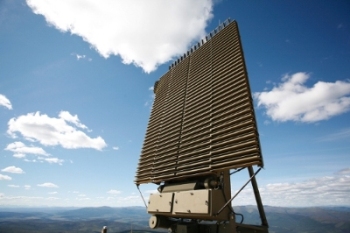Feb 23 2016
Romania will gain greater situational awareness with two new TPS-77 radars under a contract agreement with Lockheed Martin.
 Romania and Lockheed Martin have a partnership that dates to 1995 and that includes more than two dozen ground-based radars, like the TPS-77, shown here. This latest contract agreement highlights Lockheed Martin's role to continually provide technology to meet its customers' missions. Photo courtesy Lockheed Martin.
Romania and Lockheed Martin have a partnership that dates to 1995 and that includes more than two dozen ground-based radars, like the TPS-77, shown here. This latest contract agreement highlights Lockheed Martin's role to continually provide technology to meet its customers' missions. Photo courtesy Lockheed Martin.
Like all next-generation radars made by Lockheed Martin, the company is planning to include innovative new Digital Array Row Tranceivers (DART), which lead to energy efficiency and greater performance for the Lockheed Martin suite of radars.
Romania and Lockheed Martin have a partnership that dates to 1995 and that includes more than two dozen ground-based radars. This latest agreement highlights Lockheed Martin's role to continually provide technology to meet its customers' missions.
"For over 20 years, Lockheed Martin and Romania have built a strong partnership to enhance Romania's air surveillance and weather radar network," said Mark Mekker, Lockheed Martin director, surveillance radar. "The feedback we receive from our ongoing collaborations with countries like Romania leads to the development of system enhancements, like DART. Our teams thrive on developing leading-edge technologies to meet our customers' needs."
The TPS-77 DART uses Gallium Nitride (GaN) technology, allowing the high-power amplifiers to consume much less power, ultimately increasing reliability, lowering life-cycle costs and extending the useful life of the radar. Lockheed Martin has been using GaN in its radars for more than six years.
Lockheed Martin has produced and maintains more than 175 surveillance-range radars, all of which are operational around the world detecting targets at ranges up to 250 miles, 24 hours a day. These radars are capable of operating completely unmanned and many have performed for decades in remote, inhospitable areas and in a wide range of operational environments.
No Lockheed Martin FPS-117/TPS-77 radar has ever been taken out of service and the systems continue to operate well beyond their original 20-year service lives (many planned to operate for more than 40 years). This longevity is a direct result of continuous Lockheed Martin investment in state-of-the-art technology and dedication to customer success.
Work on the TPS-77 radars will be done in Syracuse, N.Y.